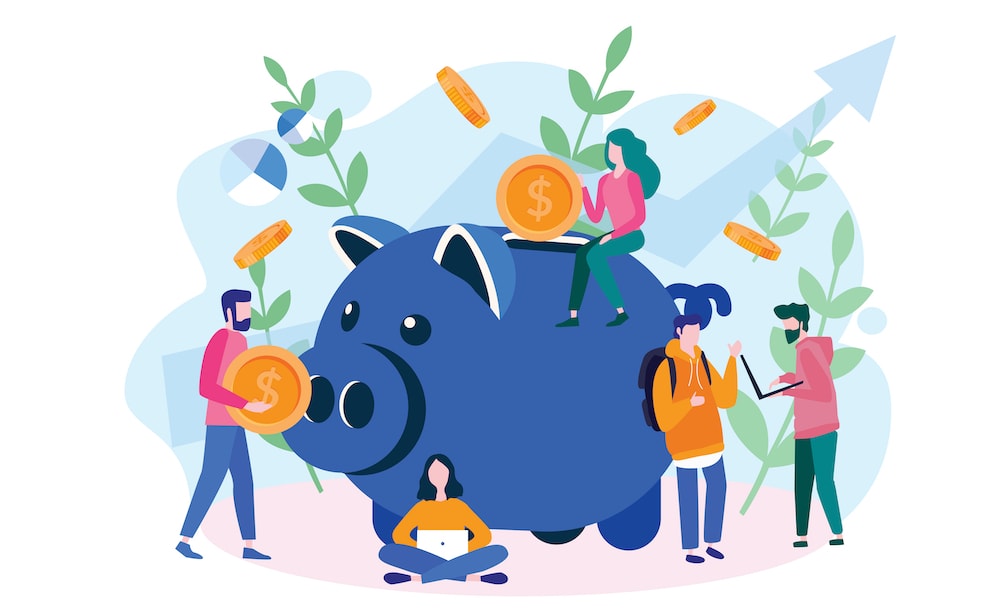How to Budget for a House | Down Payment | Closing Costs | Additional Expenses | Find a Real Estate Agent
In 2022, the median home price in the U.S. is $428,700 — a 30% increase from just two years ago, according to the Federal Reserve Bank of St. Louis.
The National Association of Home Builders estimates that 87.5 million households — roughly 69% in the nation — can’t afford a median-priced home in 2022.
Like you, our team of real estate researchers and experts are also coping with these challenging conditions. We’re here to help you understand the expenses — especially the hidden ones — that come with buying a home, and we can help you figure out how to save for one of the biggest financial milestones most Americans experience.
Step 1: Determine How Much Can You Afford to Spend on a Home
It’s tough to pinpoint exactly how much you can afford to spend on a home, especially when inflation is high and budgets are tight. Also, your income or other expenses might fluctuate from month to month.
Here’s how experts recommend creating a rough estimate that will help you set an affordable price range to shoot for.
Multiply Your Annual Income by 2 or 2.5
To help determine how much mortgage you can afford, consider this rule of thumb: Spend no more than your annual income (the amount you earn before taxes) multiplied by 2 or 2.5.
Keep in mind that you’ll be paying more than your loan payment — a mortgage payment typically includes the principal, interest, taxes, and insurance (PITI). The Clever Data Center found the average homeowner spends $2,578 on property taxes and $1,680 on homeowners insurance per year.
The 28/36 Rule
The 28/36 rule is another common method to determine if you’re ready to buy a house by measuring the amount of debt you can safely take on when buying a house, based on your income and previous debts.
The rule states that your mortgage loan payments should amount to less than 28% of your annual gross income and your debt should amount to less than 36% of your income (known as your debt-to-income, or DTI, ratio). Going above these percentages is risky and could result in defaulting on the loan.
To calculate your house budget using this rule:
- Multiply your annual gross income by 28%. That’s the maximum amount you should spend on house payments in a year.
- Divide that number by 12 to break it down into a monthly amount to compare it to the proposed monthly mortgage payments for prospective houses.
- Add up your total debt, including the mortgage payments.
- Divide it by your monthly income (annual gross income divided by 12).
- Determine if your debt is less than 36% of your annual income.
You can use a spreadsheet or the FreddieMac home budget worksheet to help you plan.
Let’s look at an example.
If your income is $68,000 ($5,667 monthly), the maximum you could spend on mortgage payments would be $19,040 ($1,587 monthly) per year to stay under 28%.
| Annual Housing Budget for an Annual Gross Income of $68,000 |
| $68,000 x 0.28 = $19,040 |
An annual house budget of $19,040 would come to $1,587 per month.
| Monthly Housing Budget for an Annual Gross Income of $68,000 |
| $19,040 / 12 = $1,587 |
According to recent data from the U.S. Census Bureau, the median monthly mortgage payment in 2022 in the U.S. is around $1,100.
So, suppose you were looking at a house with a monthly mortgage payment of $1,100, and you had $1,750 in total monthly debt payments, including school loans, car payments, and housing costs.
With an income of $5,667 per month, your total debt would be 31% of your income — 5% below the 36% threshold, which is exactly what you’re aiming for.
| Debt-to-Income Ratio (Including Estimated Housing Costs) |
| $1,750 / $5,667 = 31% |
The lower your DTI ratio, the better off you are financially, and the more prepared you are to buy a house. Also, you are more likely to get a more favorable mortgage rate because you will be less of a risk to lenders.
If your debt-to-income ratio is too high, you have a couple options, including:
- Pay off as many of your debts as possible
- Increase your income
- Find a house with a lower monthly mortgage payment
Don’t Forget to Factor in Other Expenses
Other factors also determine how much you can afford to spend on a house. Besides your income, you’ll need to consider your:
- Utility costs, car payments, and other expenses
- Credit score
- Mortgage rates
- Down payment, closing costs, moving expenses, and other home-related costs
Step 2: Set a Down Payment Savings Goal
Now that you know your house-hunting budget (28% of your pre-tax income), you can set a down payment savings goal. Down payment amounts can range from 0% to 20%, depending on the type of home loanyou apply for and your credit history.
Your down payment is a crucial step in your budget for a house. A lower down payment means higher monthly mortgage payments. You can spend less on housing costs each month by putting more down initially.
Plus, there’s private mortgage (PMI) to consider. Lenders require PMI if your down payment is less than 20%. An FHA mortgage charges PMI for the life of the loan. However, a conventional loan lets you remove PMI once you reach 20% equity.
PMI costs between 0.22% to 2.25% of your mortgage. For a $300,000 house, you could end up paying $660 to $6,750 extra if you don’t pay a 20% down payment. You can avoid this expense by buying a cheaper property or holding off on buying until you can save for a larger down payment.
Step 3: Save Money for Closing Costs
The down payment isn’t the only upfront cost you’ll need to cover when saving for a house. The average lender typically pays 3% to 5% of the loan amount in closing costs, which can include:
- Appraisal and survey fees
- Attorney fees
- Closing or escrow fee
- Credit report fee
- Homeowners insurance
- Loan origination fees
- Mortgage points
- Property taxes
- Title insurance
It’s no small chunk of change. Closing costs can add up to between $9,000 and $15,000 for a $300,000 house.
Step 4: Create a Financial Cushion for Additional Expenses
It’s easy to overlook new and ongoing expenses when you’re buying a home. You don’t want to exceed your housing budget, so add a cushion for extra costs.
Moving Costs
No matter where you’re moving from, you will likely incur some moving costs to get your belongings into your new home. Moving costs depend on the number of belongings you plan to move, how far you’re moving, and the type of service you hire.
A local moving service costs an average of $1,656 per move, according to HomeAdvisor. Adding a professional packer (including materials and labor to pack boxes and furniture) could increase the total by $270 to $2,200.
Ongoing Expenses
Once you’re settled into your new home, you’re responsible for the monthly mortgage payment that may include the principal, interest, property taxes, insurance, PMI, and HOA fees.
You must also consider maintenance and other hidden costs, which average $15,405 every year on top of a mortgage, according to the Clever Data Center.
Step 5: Find a Real Estate Agent
Finding and buying a home within your budget is hard, especially in the current housing market. An experienced real estate agent can help you anticipate costs when budgeting for a new home and help you negotiate with sellers to get the best deal possible.
Recommended Reading
Frequently Asked Questions About How to Budget for a House
What is the 50-30-20 rule in home budgeting?
The 50-30-20 rule in home budgeting is a guide to help people save money for a house, retirement, emergencies, etc. According to the rule, 50% of your income should go to necessary budget items, like mortgage payments and utilities, 30% to to wants, and 20% should go into savings. Check out our guide to how to budget for a house.
How much should I spend on a house if I make $100K?
If you make $100K a year, you can likely afford a house somewhere between $300,000 and $500,000 depending on how much of a down payment you need, how much you have saved up, how much your closing costs are, etc. Learn how to budget for a house.
Can you buy a house with a 40K salary?
Yes, you can buy a house with a $40,000 salary in places with very low housing prices. Buying a house with a $40,000 salary can definitely be a struggle, but it is possible to negotiate closing costs and find low mortgage rates and down payment options. Here are some tips on how to budget for a house.
How much is a down payment on a $300K house?
A down payment on a $300K house can vary widely depending on which lender you use, your credit score, and several other factors, but the average percentage is between 3% and 3.5% of the purchase price — which would be $9,000–$10,500. Here are some more tips on how to budget for a house.



